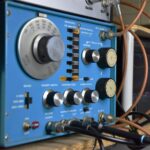World Amateur Radio Day happens every year on April 18. Amateur radio, commonly referred to as HAM radio, makes use of the radio frequency spectrum for non-commercial purposes such as exchanging messages, private recreation, emergency communication, wireless experimentation, and self-training. Federal Communications Commission (F.C.C.) and the International Telecommunication Union (I.T.U.) assign radio frequencies to amateur radio services. These frequencies are used by amateur radio operators to interact with similar people via two-way personal communication. The I.T.U. is responsible for all matters related to information and communication technologies. The transmission’s technical and operational characteristics are regulated by national governments that issue licenses with unique identifying call signs to individual stations. These call signs must be used in all transmissions.
History of World Amateur Radio Day
Amateur Radio Service was established by the I.T.U., a special agency of the United Nations formed on May 17, 1865.Hams is another term for amateur radio operators. The term “ham” was initially used as a derogatory moniker for amateur radio operators by operators in the commercial and professional radio communities in 1909. The term was quickly adopted by the operators and became ingrained in their lexicon. The phrase, however, did not become widely used in the United States until around 1920, after which it gradually spread to other English-speaking countries.International Amateur Radio Union (I.A.R.U.) was formed by the Amateur Radio pioneers in Paris on April 18, 1925, to support Amateur Radio worldwide. It was first discovered by Amateur Radio experimenters that the short wave spectrum could support worldwide propagation. The I.A.R.U. noted that in the race to exploit these shorter wavelengths, Amateur Radio was at great risk of being pushed aside.Since its inception, the I.A.R.U. has worked relentlessly to safeguard and increase Amateur Radio frequency allocations. Radio amateurs can now experiment and communicate in frequency bands strategically positioned throughout the radio spectrum thanks to the help of enlightened administrations all over the world.The I.A.R.U. has expanded from 25 countries upon its founding in 1925 to 160 member societies in three regions. Europe, Africa, the Middle East, and Northern Asia are all part of IARU Region One. Region Two includes the Americas, while Region Three includes Australia, New Zealand, the Pacific island nations, and the majority of Asia. The I.T.U. has recognized the I.A.R.U. as representing amateur radio’s interests.
World Amateur Radio Day timeline
Henry Rudolf proves the existence of radio waves.
The first commercially produced wireless telegraphy receiver becomes available to amateurs.
Students at Columbia University form the club that we now know as Columbia University Amateur Radio Club.
Three new amateur radio bands are established at the world administrative radio conference.
World Amateur Radio Day FAQs
When were HAM radios most popular?
In the 1970s.
Why is it called HAM radio?
The term ‘ham’ was a derogative nickname for radio amateurs but it has since been accepted by them.
Who uses HAM radio?
People use amateur radio to communicate across town, over the world, and even into space, all without the use of cell phones or the Internet.
World Amateur Radio Day Activities
-
Learn more about amateur radio
Amateur radio is not as popular as it ought to be. Do more research about it.
-
Educate people on amateur radio
After doing research, spread the knowledge. This could get you a listening buddy or you might even succeed in convincing someone to join amateur radio.
-
Listen to amateur radio
There are apps available on both iOS and Android that allow you to listen to them. Try some today!
5 Interesting Facts About Radio
-
The most powerful radio station
W.L.W. is the most powerful radio station ever.
-
The world’s first voice message
The world’s first voice message was transmitted by Reginald Fessenden in 1900.
-
Eiffel Tower broadcast
Radio scientists did the first public radio broadcast from the top of the Eiffel Tower.
-
Antennas kill
Many birds are killed by radio antennas every year.
-
Eternal travel
There is a popular belief that radio waves will continue to travel forever.
Why We Love World Amateur Radio Day
-
Amateur Radio alerts us about a local emergency
Sometimes, thanks to Amateur Radio, we get first-hand reliable information about a local emergency, which can save lives. Television news can be slow and social media can be full of misinformation but amateur radio is often reliable.
-
Amateur Radio is a worldwide community
Amateur radio is a tremendous social activity. Radio amateurs often come together for different social events and radio meet-ups. The best thing is that these gatherings are available both offline and online. They are not just limited to radio amateurs alone, anyone living near the gathering can participate.
-
It is a day to show off
World Amateur Radio Day is a day for radio amateurs to show their skills to the world. Amateurs of different regions come together to celebrate with one another.
World Amateur Radio Day dates
| Year | Date | Day |
|---|---|---|
| 2023 | April 18 | Tuesday |
| 2024 | April 18 | Thursday |
| 2025 | April 18 | Friday |
| 2026 | April 18 | Saturday |
| 2027 | April 18 | Sunday |




























